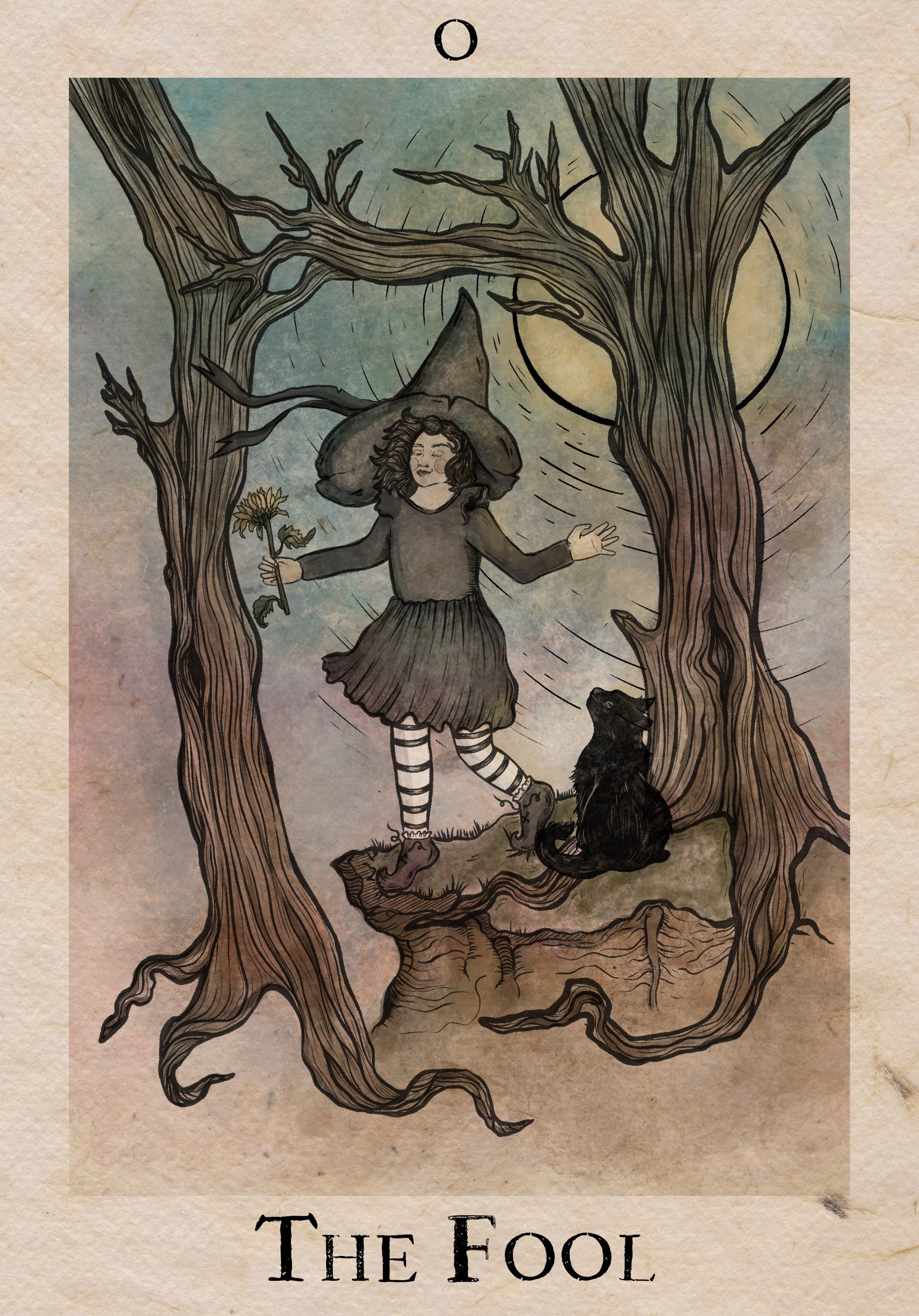
Literary Spells: Spooky Spring Submissions
Calling all poets, storytellers, and literary witches - would you like to cast a spell with us? Hosted by Pointy Hat Press, the Spooky Spring Series was inspired by haunted hearts, spectral travelers, and confessional poetry.
Calling all Poets, Storytellers, & Literary Witches…
Is your journal brimming with springtime musings? Are there flowers scattered across the pages? Seeds embedded into the binding? Thorny tendrils leading you deeper into mystical, mysterious worlds?And (we’re all friends here, you can be honest), does it feel a bit spooky?
Floromancy for the Flower Moon: The Origin of the Rose
Sensual and chthonic, Witches and Goddess will cultivate this flower for spells of unfurling, blooming, and becoming. According to Roman myth, the goddess Venus adorned herself with scented rose petals and painted this flower's story, and the the pentagram, into the starry sky. In some tales, the Goddess of Love and Beauty is also credited as the mother of the rose.
Once upon a Beltane: The Tale of Syrinx & Pan
Beltane is the inverse of Samhain, so when the Hawthorn trees bloom, the veil to the Otherworld thins. The Hawthorne tree is said to be protected by Bloddeuwedd, the Welsh Goddess of Flowers and Initiations. Like the bee seeks out the most fragrant blooms, Hawthorn's blossoms attract abundance and authenticity, and Bloddeuwedd's berries speak to our ancestral roots. Legend says if we're able to gain the fairies' trust, Bloddeuwedd offers us a bouquet of protective thorns for as long as our Beltane fires glow.
Spooky Spring
Hosted by Pointy Hat Press, our Spooky Spring Series was inspired by haunted hearts, spectral travelers, and confessional poetry. To join in on the Spooky Spring challenge, submit an original poem, song, sonnet, short essay (500 words or less), or illustration about ghosts, ghouls, witches, or whatever haunted chambers you're exploring this spring.
Beneath the Pink Moon: Would you like to Cast a Spell with Us?
Spookiness is typically reserved for the dark half of the year, but who says the dead vanish when our gardens bloom? And who says haunted hearts cease to exist when the sun shines? When spring arrives, what happens to the ghosts of things left unsaid?
When All Fool’s Day Meets the Pink Moon
With so much to look forward to this April – burgeoning wildflowers, warmer days, the promise of a new season - why does a month of potential begin with All Fool's Day? Better known as April Fool's Day, the first of April has been dedicated to trickery and shenanigans for ages. In fact, while there are several theories as to how and when this tradition began, nobody can say for sure. Here are some interesting theories…
March Magick: The Worm Moon
While the name 'Worm Moon' feels fitting as we prepare for our garden spells, we might also know it as the Sugar or Sap Moon (a nod to the soon-to-be-tapped Maple trees) the Crow Moon (Delaware Native American origin), the Chaste Moon (Medieval origin), or my favorite, the Moon of Winds (Celtic origin).
The Snow Moon: An Imbolc Invitation
Also known as Brighid's day, Imbolc doesn't suggest we throw caution to the wind and ignore the lessons from winter. Because until the Springtime Heroine shows up in March (the Spring Equinox), the Winter Witch still steers the seasonal wheel. Like a light at the end of the tunnel, Imbolc is a spark. An awakening. It's an invitation to follow the flickering candle to the next chapter of our story.
January is for the wolves…
In Dreamland, we adventure to our heart's desire, collect seed-shaped stories, and upon rousing from our beds, we scatter them throughout the waking world. It would appear that after many years of planting fairy tales in our gardens, within our hearts, and between the pages of our favorite books, these stories' ancient roots continue to twist and weave between worlds.
The Moon Before Yule
December's moon is known as the Cold Moon, Long Night's Moon, and the Moon Before Yule. Traditionally, the final moon of the year was an invitation to reflect on our struggles and successes, and where we'd like to be in the coming months. In magickal circles, some people use this time to rest and recharge, while others utilize the extra moonlight for lunar magick. Spells related to dreamwork, journeying, and psychic forecasting are popular during the long nights – no matter the moon's phase.
Apple Magick: The Fruit of the Underworld
When thinking about enchanted orchards as they appear in fairy tales and folk stories, there are none as famous as the mystical, magical apple. Governed by Venus and said to be the fruit of the gods, apples ripen en masse as the dark months arrive and we invite fire back into our homes. Apples are also known as the food of the dead and the fruit of the Underworld. At one time, Samhain was called the Feast of Apples.
Once upon a November Moon…
Traditionally, November's moon is nicknamed after the hardworking, crafty, semi-aquatic creature – the beaver. Like other warm-blooded animals, the beaver is busy preparing his winter den. He won't burrow into the earth like his good friends the hedgehog and chipmunk, but will create a cozy, above-ground lodge with sticks, mud, and leaves. The beaver doesn't hibernate, but he still needs to keep warm and dry during the cold months.
A Samhain Invitation
Enchanted meals have been ritualized for centuries, but with Pagan and ancestral folk practices finding their way back into the light, this year more than ever we've heard people discussing one of our favorite rituals – hosting a Dumb Supper.
The Hunter Moon: Shedding our Summer Skin
On this first full moon since the Autumn Equinox, we meet the Hunter Moon. Also called the Travel Moon, Dying Grass Moon, Winter Nights Moon, Blood Moon, or similarly, Sanguine Moon, traditionally October's Moon speaks to the raw, ruddiness of the season and ancestral food cycles.
Welcome to the Season of the Witch
At Midharvest, when the garden grows crispy, the moon brighter, and spooky stories return at long last, our plant ally – the pumpkin – appears in droves.
I would be remiss if I didn't mention gourds, squashes, and even turnips – all vessel-like fruits and roots that according to folklore, can be hollowed out to store light, wisdom, and a bit of magick.
Happy Harvest Moon
Since this full moon sits closest to the Fall Equinox, it's called the Harvest Moon. If that were true about October's (which does happen, just not as often), then September's moon would be known as the Corn or Barley Moon.
Perhaps we can also think of it as Persephone's Moon.
September’s Shadows: Autumn is in the Air
When the Autumnal Equinox arrives (Sept. 21st/22nd in the Northern Hemisphere and March 20th/21st in the Southern), Mother Nature parts the veil and we step into the dark half of the year. Unlike the Spring Equinox when we expand, stretch, and reach for the light, right now, we have our eyes on the shadows.
August Moon Magick: Diana’s Mirror
In ancient Rome, August's full moon was dedicated to Diana. Like her Greek counterpart Artemis, Diana is a huntress. A moon goddess through and through, Diana is sometimes called the Queen of Witches. She knows of cycles, wild medicine, and the push and pull of earthbound living.
An Artemis Story for July’s Buck Moon
Among spiritual communities, a stag’s antlers are associated with the Tree of Life and psychic projection. Also regeneration, and likewise, resurrection. Peaceful yet protective, the stag acts as a mediator between the spirit world and earth. While the stag embodies strength and independence (traditionally viewed as masculine characteristics), some goddesses and shapeshifters take this form when communicating with followers and conversely, distracting adversaries.






















